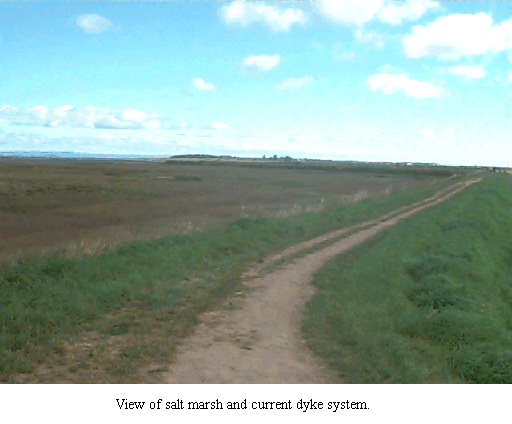

The early settlers used the marsh lands both as they were for hay production and grazing, and for cultivated crops. In order to cultivate, the land first had to be dyked to prevent flooding by salt water. Soil is dug up from the base to make the dyke.The Acadians first constructed dykes in the Grand Pre area in the 1680s. A number of years after the Acadians were expelled from the area (Expulsion of 1755) the planters (New Englanders, Irish and Germans) settled on the vacant Acadian dykelands.
Although the land is owned by farmers, the dyke is maintained by the Department of Agriculture and managed by the Farmerís Association. A notice board has been put up by the Farmerís Association to keep people aware of whatís going on. There is a conflict between the farmers and those who use the dykes for recreation, as the dykes are public but the farmland is private. Signs to keep off the dyke are often ignored which makes it hard to grow grass on and maintain the dyke.
Saltmarshes are one of Nova Scotiaís most endangered habitats.
We have lost between 75-85% of our original marshland to agriculture. This
has important consequences for the productivity of marine ecosystems because
juveniles of many economically important species feed in salt marshes at
high tide. Also, much of the organic material produced in the salt marsh
is exported with the outgoing tides to deeper water where it provides an
energy source for marine ecosystems.